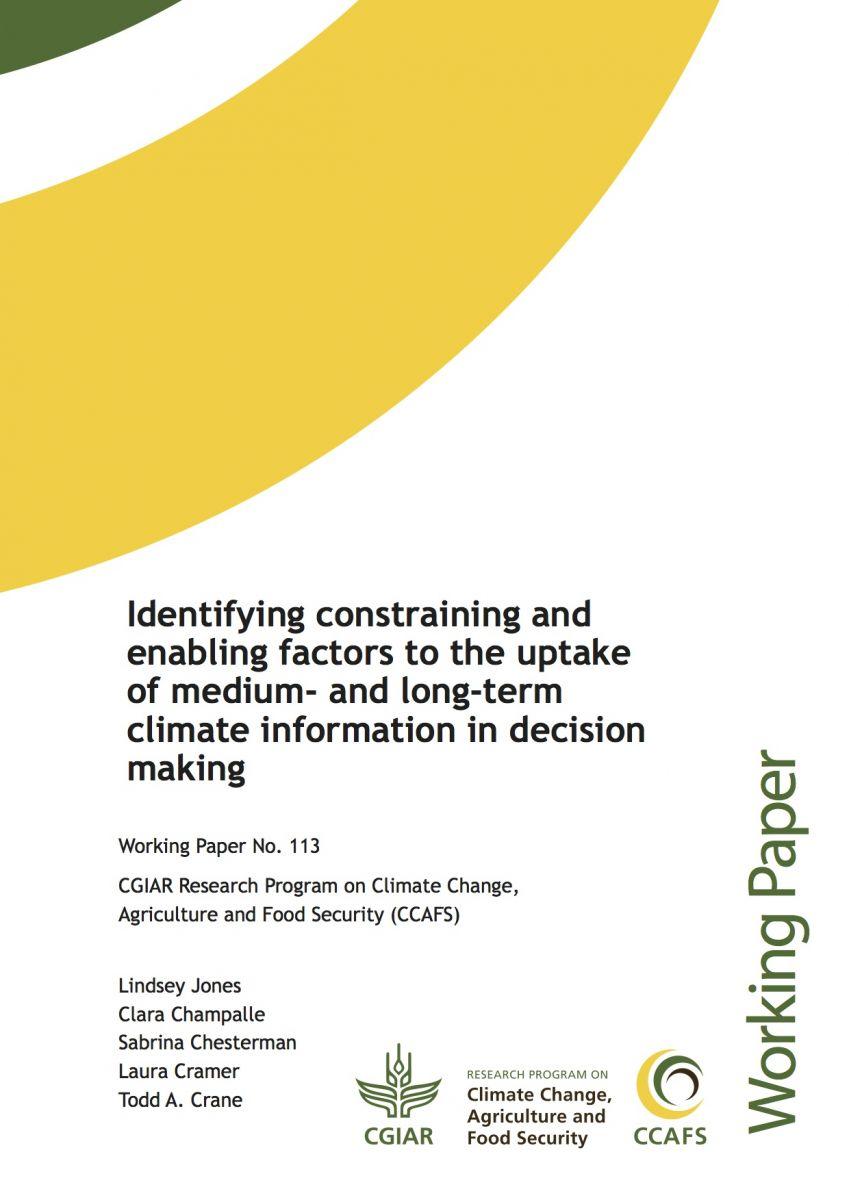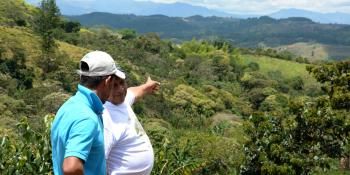New paper explores use of long-term climate information in decision making

New working paper identifies barriers and enablers for policy makers to use longer-term climate information in development plans and investments.
Without clear and straightforward guidelines for the future, policy makers have to decide what to build today, that won’t risk inundation in the year 2050. Or which crops farmers should invest in, that will still be productive under a changing, more variable, climate.
It might therefore seem straightforward to suggest that policy-makers make good use  of climate information in their long-term planning and decision making. Yet, new research suggests that longer-term climate information, which are projections that extent beyond a year into the future, are currently not being adequately considered in decision making processes.
of climate information in their long-term planning and decision making. Yet, new research suggests that longer-term climate information, which are projections that extent beyond a year into the future, are currently not being adequately considered in decision making processes.
This is despite recent progress in promoting better uptake of weather and short-term climate information, which include daily, weekly and seasonal forecasts.
To shed light on this important topic, a new working paper by the CGIAR Research Program on Climate Change, Agriculture and Food Security (CCAFS) presents the results of a systematic review of academic literature investigating factors that support and prevent policy makers from using and incorporating medium- and long-term climate information in their planning decisions.
The team hopes this valuable knowledge can help international agencies to better understand why countries are not incorporating future climate-thinking and data in their investment decisions, planning processes and institutional responses, and provide more targeted support.
How well countries are prepared for climate change depends on how well they've incorporated longer-term climate information. Photo: A. Heavens
The paper, entitled ‘Identifying constraining and enabling factors to the uptake of medium- and long-term climate information in decision making’ was conducted in collaboration with the International Livestock Research Institute (ILRI), CGIAR and the Overseas Development Institute (ODI) as part of CCAFS Flagship on Policies and Institutions.
What makes or breaks use of climate information?
The review of, in total, 44 articles reveals that, despite the lag, longer-term climate information is currently being used to, for example, guide infrastructure investments, and in environmental policy to support adaptation planning at various governance scales.
Long-term climate information is also appreciated and used in the context of scenario planning, which allows for consideration of future risks and implications of different development pathways.
Another use has been to identify hotspots or areas with high potential of future vulnerability to climate risk and help to devise ’climate-proof’ strategies for those areas.
The review’s findings signal that national bodies have started to incorporate climate information into various sectors, in order to adapt to climate change, but it became quite apparent that much of this progress is happening mainly in North America and Europe. It might not come as a surprise but it is clear that developing countries and regions are falling behind in making plans that incorporate future climate analysis and information.
Here are a few reasons why this might be.
Constraints to using longer-term climate information
Through the literature review, the scholars outline ten constraints to why policy-makers might not make the most of available climate information in investments and plans.
The constraints have then been grouped into five overarching categories, namely:
- A disconnect between producers and users of climate information;
- Limitations of climate science and information;
- Financial and technical constraints;
- Political economy and institutional constraints; and
- Psychosocial constraints.
Selected constraints in incorporating longer-term climate information:
> The great science-policy divide. A key issue is the recurrent disconnect between what type of information is being produced and in what format by climate scientists and what policy makers actually need to make informed decisions and policies. Better communication and a willingness to accommodate information needs could help solve the science-policy divide.
> Not enough financial resources. Downscaling climate data at regional and local scales is computationally expensive and as a result, resource-poor countries in, for example, sub-Saharan Africa and South Asia will access fewer high resolution outputs to guide decision making.
> Lack of scientific capacity. The complexity of medium- to long-term climate information requires high levels of scientific capacity to interpret and analyse associated outputs. It also requires technical capacity to communicate relevant information to decision makers in a manner that is both easily interpretable to decision makers and does not sacrifice the integrity of the underlying science.
> Few incentives to cover the next decades. Decision makers’ time horizon usually covers only the next few years. Politicians seldom have the incentives to make long-term plans that fit an uncertain future - especially if it requires added resources, capacity building and training.
> What are the risks anyways? Another key and major constraint is the gap in the perception of risk between scientists and decision makers; and a perceived lack of trust in and credibility of climate information. Low levels of perceived risk can contribute to inaction or the prioritization of addressing other risks ahead of climate adaptation.
What are the enablers for incorporating climate information?
Coming back to the gap between Europe and North America and developing regions such as South Asia and Sub-Saharan Africa, there’s a need to address the pertinent and immediate lack of basic development needs and technical capacity to integrate climate information into decision-making processes.
Using long-term climate infor-mation in Kiribati:
Climate information stretching several decades into the future helped policy makers in the Pacific island nation make investment decisions for measures to guard against sea level rise, such as constructions of sea walls and planting of mangroves.
The Government officials have also used projected sea level rise to formulate another contingency plan: an initiative dubbed “Migration with Dignity” which is aimed at identifying other countries in which Kiribati citizens can fulfil labor needs and then formulate seasonal overseas work programs to help begin the transition.
Here, looking at the enabling factors that the team identified could support such a process. Enabling factors include: capacity building and training of policy-makers; better resolution data and matching timescales; changing research processes to match the needs of policy-makers; building trust through expanding collaboration between climate scientists and decision makers; iterative feedback to ensure information that is produced is demand drive; and slowly changing the institutional structures to become more flexible.
Learning from successful cases where longer term climate information has been used can also prove to be helpful, such as the Kiribati study (see Text Box).
Download the Working Paper to learn additional enabling factors that support the use of long-term climate information: Jones L, Champalle C, Chesterman S, Cramer L, Crane TA. 2015. Identifying constraining and enabling factors to the uptake of medium- and long-term climate information in decision making. CCAFS Working Paper no. 113. Copenhagen, Denmark.



